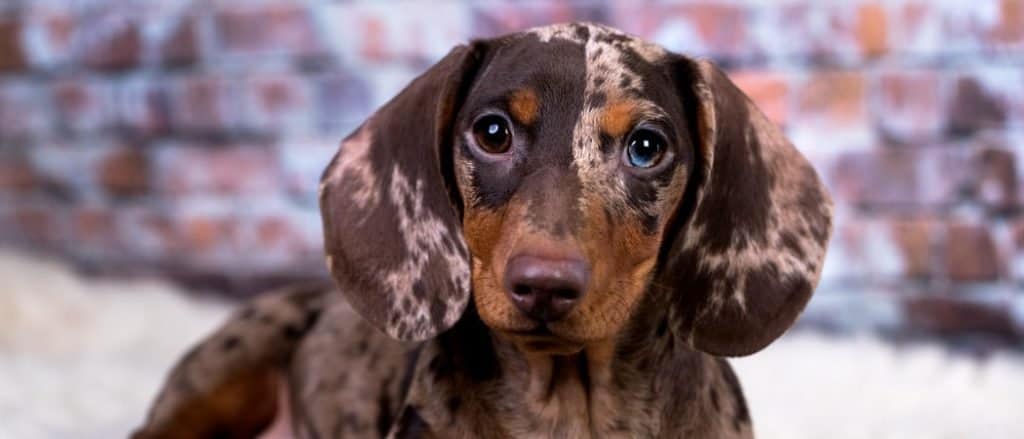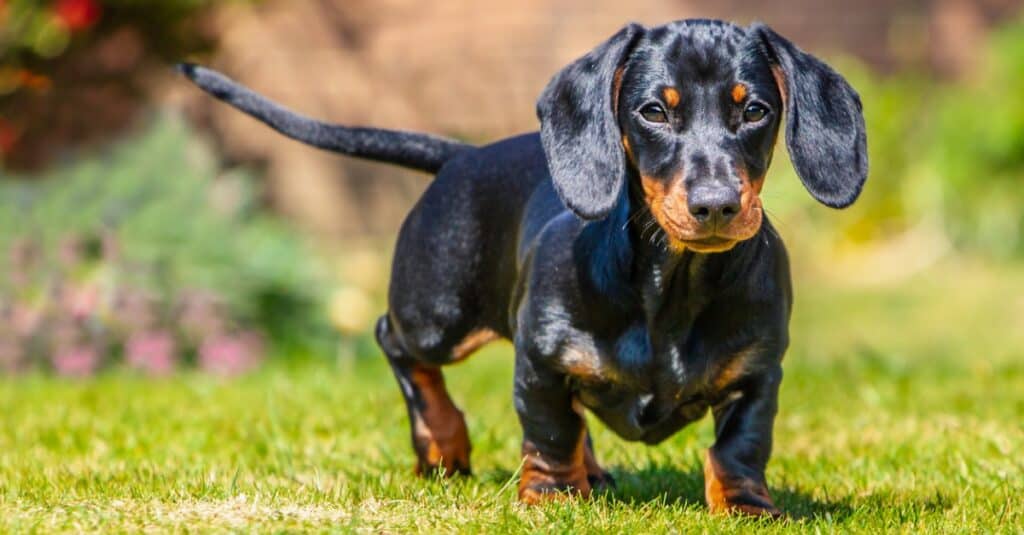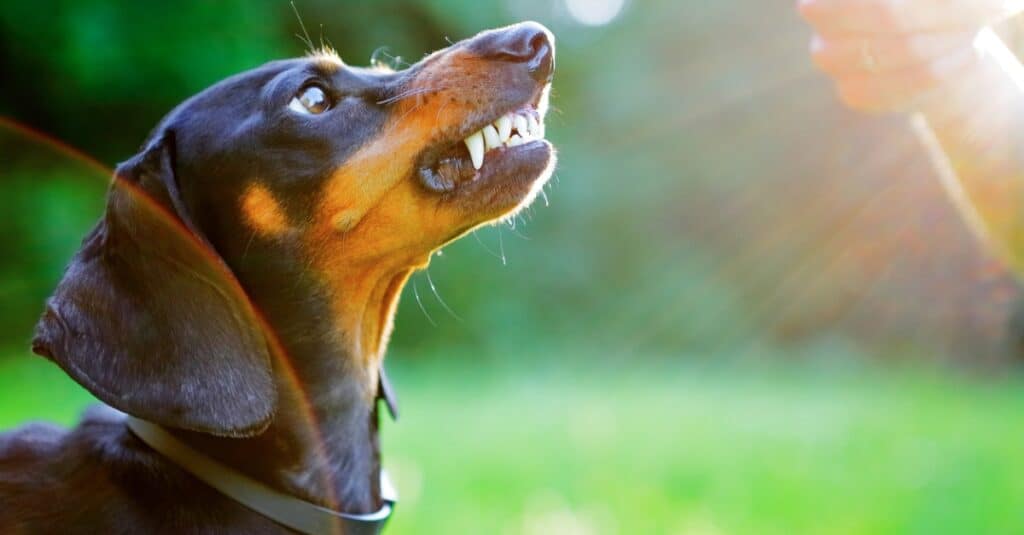The dachshund is a dog breed that was originally bred to hunt badgers, foxes, rabbits, and other tunneling animals. These canines, which are expert scent hounds, have been used in the past to track wild boar. This adaptable breed makes a good family pet, small-game hunter, and even show dog. Their name is even a testimony to their hunting prowess- Dachshund is of German origin and literally means “badger dog.”
Despite these dogs being skilled hunters, they are also really small in size. Aside from serving as hunting dogs, the dachshund breed is intelligent and can fulfill a range of different roles. Overall, these dogs are extremely loyal and playful. Want to know more about their teeth and what they use them for? Keep reading to understand exactly what goes on in the mouth of dachshunds.
How To Identify Dachshunds

Liliya Kulianionak/Shutterstock.com
Of all species of dogs, dachshunds are some of the easiest to identify. The easiest way to identify them is by their long bodies and tiny legs. Purebred dachshunds have small, stubby legs and very long bodies. They feature large nostrils, floppy ears, a deep chest, visible breast bones, wider front paws, sweet oval-shaped eyes, wide foreheads, long, sharp noses, and a tail that softly curls upward. These dogs are frequently called nicknames like wiener dog or sausage dog due to their long, slender form. They stand out from other dog breeds due to their low stature and long spine.
Another way to identify dachshunds is by their heads. Purebred dachshunds have broad, wide-base heads that gradually get narrower as you get closer to their sharp, pointed noses. Additionally, they have thick, powerful necks that aid them in keeping their heads up. These dogs are also recognizable by their short, stubby legs. However, there are certain dachshunds with legs that extend outward.
Dachshund Milk Teeth

iStock.com/CBCK-Christine
Just like other mammals and dog breeds, dachshunds do not birth their young with teeth. Like other dogs, dachshunds feed their puppies milk from their nipples for a few weeks. After the first three weeks of their birth and feeding on milk, dachshund puppies start to grow milk teeth, otherwise called deciduous teeth. Before their first set of teeth grow out, you might notice that dachshund puppies seem to be biting objects a lot more or just generally putting more things into their mouths to scratch their gums. This means they are teething.
There is no precise number of milk teeth dachshunds grow at three weeks old. However, by the time they hit eight weeks, these puppies grow their complete set of milk teeth. Like most dogs, dachshunds only have space for 28 milk teeth. One thing that is worth noting is that the minute these puppies get their complete milk teeth, they start losing them. In other words, their milk teeth start to fall out almost immediately. At this point, their gums begin preparing to accommodate the growth of more permanent teeth, and the teething process continues with them chewing on more things around the house.
Dachshund Adult Teeth

iStock.com/alexandrshevchenko
As dachshunds grow, one of the most significant changes is the sprouting of their adult teeth. Unlike dachshund puppies, which have 28 milk teeth, adults have 42 permanent teeth. The teething dachshund puppies experience gets worse between their 12th and 16th week. The reason for this is that at this time, their adult teeth start pushing their way through. During this period, it is normal to find their milk teeth around as they fall off really easily.
During this teething period, it is recommended not to brush the teeth of dachshund puppies because of how sensitive their gums are. It is also advisable not to put your hands close to their mouths because they do not realize how razor-sharp their new teeth are, so they may hurt you. These dogs stop teething by the time they turn eight months, and afterward, their permanent teeth are complete.
Do Dachshunds Have Dental Problems?
Poor dental hygiene is the main cause of dental disease in dogs. Although some dogs, like some people, are merely more prone to plaque buildup, this is often brought on by the human parent’s refusal to perform routine tooth brushing. Periodontal disease in dachshunds begins as plaque on the dog’s teeth hardens into tartar. Tartar that has built up below the gumline cannot be seen or removed but can infect and harm the tissues that attach the tooth to the jaw bone. However, tartar that has built up above the gumline can be seen and easily removed before further complications occur.
Particularly in tiny dog breeds, tooth crowding can result in dental illness. If a dachshund’s jaw cannot accommodate all of the adult teeth that develop after their baby teeth fall out, there might be a need for a veterinarian’s intervention before the condition worsens. Like other dogs, dachshunds are susceptible to cysts, tumors, cavities, fractured teeth, abscesses, and tooth misalignment. The easiest way to prevent dental problems for dachshunds is to brush their teeth regularly and have them visit the vet once in a while.
Also, teething might cause some difficulties for some puppies. One of the major complications is that some of the dachshund puppy’s baby teeth might get stuck. This is bad because it prevents the adult teeth from erupting or causes them to develop side by side with the baby tooth, creating a “double tooth.” If you discover any trapped teeth in your dachshund’s mouth, take him to the veterinarian right away.
Up Next:
Dachshund Lifespan: How Long Do Dachshunds Live?
10 Ways to Safely Clean a Dog’s Teeth
The post Dachshund Teeth: Everything You Need To Know appeared first on AZ Animals.
from Animal News, Facts, Rankings, and More! - AZ Animals https://ift.tt/Kyn0PqA